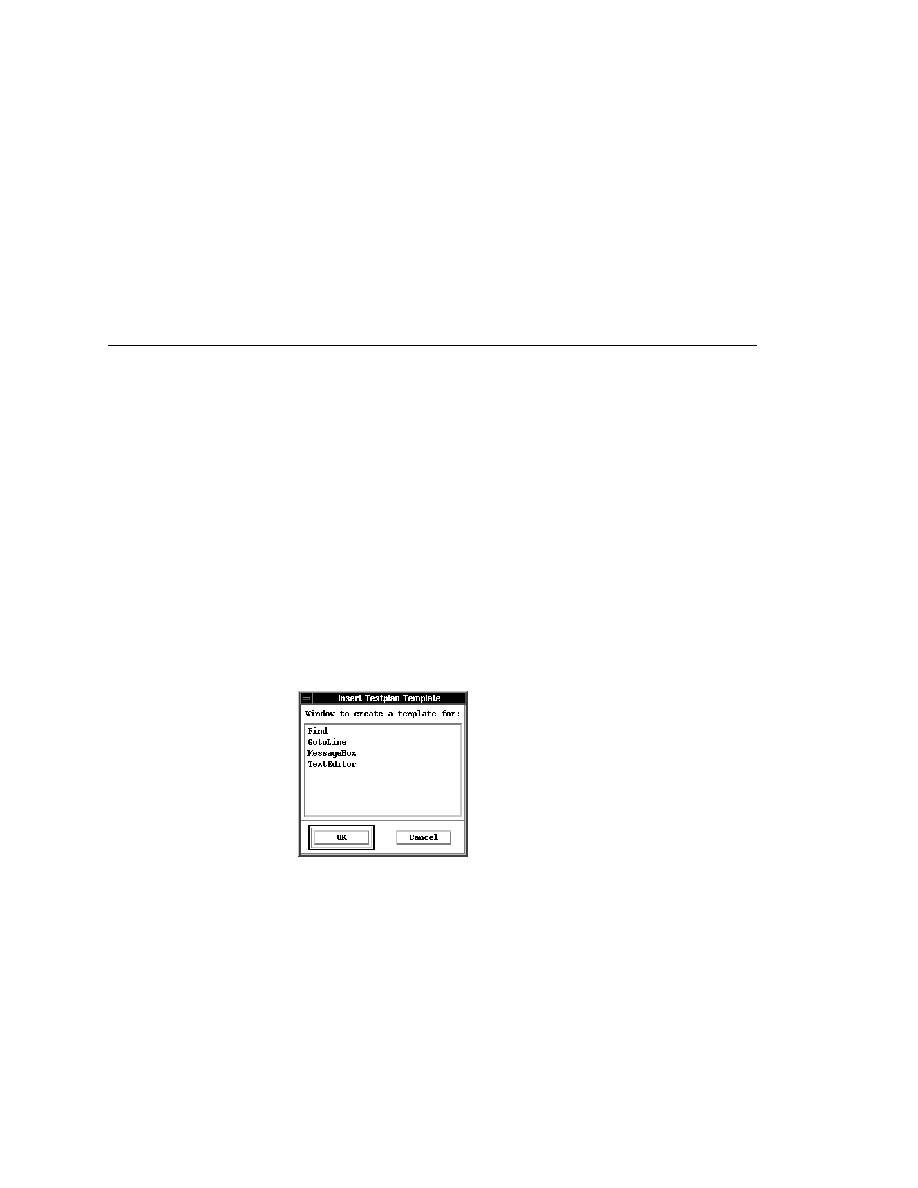
Test Plans - Using a template of the GUI hierarchy as an outline
take a testplan and convert it into a Word document.)
not convert
will have to make the corrections yourself by editing the testplan after the
conversion. For example, the quote (") character may not convert properly in
certain fonts.
which is a hierarchical outline you can use as a guide when you create a new
testplan. The template contains placeholders for each GUI object in your
application. Although you may not want to structure the testplan in a way
which mirrors the hierarchy of your application's GUI, this can be a good
starting point if you are new to creating testplans.
test frame, which contains declarations for each of the GUI objects
in your application. See Chapter 4, "Recording a Test Frame".
select list box that lists all the GUI objects declared in your test frame.
you want to test (because this is a multi-select list box, the objects do not
have to be contiguous).
testplan.